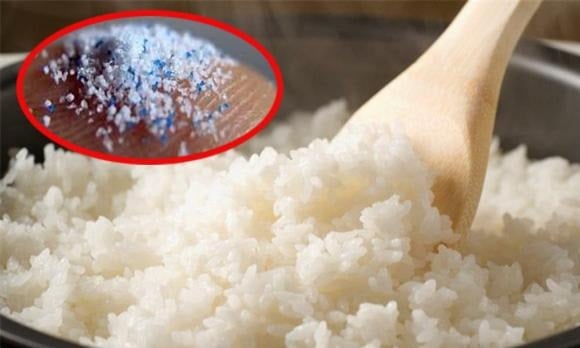Rice Contamination by Microplastics: Health Risks and Mitigation Strategies
The presence of microplastics in our food has emerged as a significant health concern. Microplastics can cause substantial harm to the human brain, inducing edema and blockage, while also increasing oxidative stress, cellular toxicity, and damage to brain cells and epithelium.
Additionally, microplastics interfere with the body’s metabolic processes, altering metabolic enzymes and disrupting energy balance. There is compelling evidence linking neurological disorders, cardiovascular disease, autism, and attention-deficit hyperactivity disorder in children to the presence of microplastics.

Unbeknownst to many, microplastics are pervasive in the air we breathe, the water we drink, and the food we consume daily. Research indicates that humans may ingest tens of thousands of microplastic particles annually through their diet alone.
Even seemingly wholesome foods like rice are not exempt from microplastic contamination. Rice becomes exposed to microplastics during processing, production, and packaging. According to experts, a single serving of rice, approximately half a cup, can result in the ingestion of at least 3 to 4 mg of microplastics.
As explained by PGS.TS Nguyen Duy Thinh, a food technology expert, the presence of microplastics in rice is a prevalent issue, attributable to the extensive use of plastic products in agriculture, such as packaging, soil coverings, and fertilizers.
While these plastic products offer advantages in terms of durability and cost-effectiveness, they contribute to the accumulation of microplastics in the soil, ultimately infiltrating our food chain. With Vietnam facing a growing plastic waste challenge, effective management and disposal of plastic waste have become critical priorities.
Minimizing Microplastics in Rice
According to Doctor Huy Hoang, a simple yet effective method to reduce microplastics in rice is to rinse it thoroughly before cooking. Rinsing helps dislodge microplastic particles that may have adhered to the rice during transportation and packaging. Additionally, it removes impurities such as sand, silt, bran, and dust.

Aside from microplastics, rice may also contain trace amounts of inorganic arsenic. Rinsing rice prior to cooking helps mitigate the presence of this toxic substance. Furthermore, it results in softer, less sticky cooked rice.
Scientists from the University of Queensland (Australia), the University of Cagliari (Italy), and the University of Amsterdam (the Netherlands) emphasize the importance of rinsing rice in the era of microplastic pollution. Their research suggests that rinsing can eliminate up to 0.9 mg of microplastics per 100 grams of rice.








































